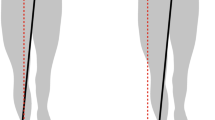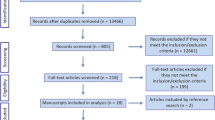Abstract
Tripping over obstacles is one of the main causes of falls. One potential hazard to actually fall when tripped is inadequate foot landing. Adequate landing is required to control the body’s angular momentum, while avoiding dangerous surfaces (slippery patch, uneven ground). To avoid such dangers, foot trajectory needs to be controlled by inhibiting and adjusting the initiated recovery foot path during a tripping reaction. We investigated whether such adjustments can be made without jeopardizing balance recovery. Sixteen healthy young adults (25.1 ± 3.2 years) walked at their comfortable speed over a walkway equipped with 14 hidden obstacles. Participants were tripped 10 times in between a random number of normal walking trials; five trips included a projection of a forbidden zone (FZ, 30 × 50 cm) at the subject’s preferred landing position. Participants were instructed to land their recovery foot outside the FZ, if the FZ was presented. Responses were evaluated in terms of foot position and body angular momentum at and following recovery foot landing. Participants successfully landed their recovery foot outside the FZ in 80 % of trials, using strategies of either shortening their recovery steps (84 %) or side stepping (16 %). Their performance improved over trials, and some participants switched strategies. Angular momenta of the adjusted steps remained small at and following recovery foot landing. Young adults can quickly change foot trajectory after tripping by using different strategies, and without detrimental consequences on balance recovery, in terms of the angular momentum. These results open possibilities for training of tripping reactions.






Similar content being viewed by others
References
Berg W, Alessio H, Mills E, Tong C (1997) Circumstances and consequences of falls in independent community-dwelling older adults. Age Ageing 26:261–268
Bieryla KA, Madigan ML, Nussbaum MA (2007) Practicing recovery from a simulated trip improves recovery kinematics after an actual trip. Gait Posture 26:208–213
Chen HC, Ashton-Miller JA, Alexander NB, Schultz AB (1994) Age effects on strategies used to avoid obstacles. Gait Posture 2:139–146
Chen HC, Schultz AB, Ashton-Miller JA, Giordani B, Alexander NB, Guire KE (1996) Stepping over obstacles: dividing attention impairs performance of old more than young adults. J Gerontol A Biol Sci Med Sci 51:M116–M122
Coxon JP, Stinear CM, Byblow WD (2009) Stop and go: the neural basis of selective movement prevention. J Cogn Neurosci 21:1193–1203
Desmurget M, Epstein CM, Turner RS, Prablanc C, Alexander GE, Grafton ST (1999) Role of the posterior parietal cortex in updating reaching movements to a visual target. Nat Neurosci 2:563–567
Eng JJ, Winter DA, Patla AE (1994) Strategies for recovery from a trip in early and late swing during human walking. Exp Brain Res 102:339–349
Forner-Cordero A (2003) Human gait, stumble and… fall? mechanical limitations of the recovery from a stumble. Twente University, Enschede, The Netherlands
Forner-Cordero A, Koopman HFJM, van der Helm FCT (2003) Multiple-step strategies to recover from stumbling perturbations. Gait Posture 18:47–59
Forner-Cordero A, Koopman HJFM, van der Helm FCT (2005) Energy analysis of human stumbling: the limitations of recovery. Gait Posture 21:243–254
Goodbody SJ, Wolpert DM (1998) Temporal and amplitude generalization in motor learning. J Neurophysiol 79:1825–1838
Gosselin-Kessiby N, Kalaska JF, Messier J (2009) Evidence for a proprioception-based rapid on-line error correction mechanism for hand orientation during reaching movements in blind subjects. J Neurosci 29:3485–3496
Grabiner M, Koh T, Lundin T, Jahnigen D (1993) Kinematics of recovery from a stumble. J Gerontol Med Sci 48:M97–M102
Grabiner MD, Bareither ML, Gatts S, Marone J, Troy KL (2012) Task-specific training reduces trip-related fall risk in women. Med Sci Sports Exerc 44:2410–2414
Kingma I, de Looze MP, Toussaint HM, Klijnsma HG, Bruijnen TBM (1996) Validation of a full body 3-D dynamic linked segment model. Hum Mov Sci 15:833–860
Körding KP, Ku S, Wolpert DM (2004) Bayesian integration in force estimation. J Neurophysiol 92:3161–3165
Moraes R, Patla AE (2006) Determinants guiding alternate foot placement selection and the behavioral responses are similar when avoiding a real or a virtual obstacle. Exp Brain Res 171:497–510
Moraes R, Lewis MA, Patla AE (2004) Strategies and determinants for selection of alternate foot placement during human locomotion: influence of spatial and temporal constraints. Exp Brain Res 159:1–13
Moraes R, Allard F, Patla AE (2007) Validating determinants for an alternate foot placement selection algorithm during human locomotion in cluttered terrain. J Neurophysiol 98:1928–1940
Oostwoud Wijdenes L, Brenner E, Smeets JBJ (2011) Fast and fine-tuned corrections when the target of a hand movement is displaced. Exp Brain Res 214:453–462
Overstall P, Exton-Smith A, Imms F, Johnson A (1977) Falls in the elderly related to postural imbalance. Br Med J 1:261–264
Owings TM, Pavol MJ, Grabiner MD (2001) Mechanisms of failed recovery following postural perturbations on a motorized treadmill mimic those associated with an actual forward trip. Clin Biomech 16:813–819
Pai Y-C, Bhatt T, Wang E, Espy D, Pavol MJ (2010) Inoculation against falls: rapid adaptation by young and older adults to slips during daily activities. Arch Phys Med Rehabil 91:452–459
Patla AE, Beuter A, Prentice S (1991) A two stage correction of limb trajectory to avoid obstacles during stepping. Neurosci Res Commun 8:153–159
Pavol MJ, Owings TM, Foley KT, Grabiner M (2001) Mechanisms leading to a fall from an induced trip in healthy older adults. J Gerontol A Biol Sci Med Sci 56:M428–M437
Pijnappels M, Bobbert MF, van Dieën JH (2001) Changes in walking pattern caused by the possibility of a tripping reaction. Gait Posture 14:11–18
Pijnappels M, Bobbert MF, van Dieën JH (2004) Contribution of the support limb in control of angular momentum after tripping. J Biomech 37:1811–1818
Pijnappels M, Bobbert MF, van Dieën JH (2005a) Push-off reactions in recovery after tripping discriminate young subjects, older non-fallers and older fallers. Gait Posture 21:388–394
Pijnappels M, Bobbert MF, van Dieën JH (2005b) Control of support limb muscles in recovery after tripping in young and older subjects. Exp Brain Res 160:326–333
Pijnappels M, Bobbert MF, van Dieën JH (2006) EMG modulation in anticipation of a possible trip during walking in young and older adults. J Electromyogr Kinesiol 16:137–143
Pijnappels M, Kingma I, Wezenberg D, Reurink G, van Dieën JH (2010) Armed against falls: the contribution of arm movements to balance recovery after tripping. Exp Brain Res 201:689–699
Potocanac Z, Hoogkamer W, Carpes FP, Pijnappels M, Verschueren SMP, Duysens J (2014) Response inhibition during avoidance of virtual obstacles while walking. Gait Posture 39:641–644
Prablanc C, Martin O (1992) Automatic control during hand reaching at undetected two-dimensional target displacements. J Neurophysiol 67:455–469
Rao SS (2005) Prevention of falls in older patients. Am Fam Physician 72:81–88
Rhea CK, Rietdyk S (2011) Influence of an unexpected perturbation on adaptive gait behavior. Gait Posture 34:439–441
Robinovitch SN, Feldman F, Yang Y, Schonnop R, Leung PM, Sarraf T, Sims-Gould J, Loughin M (2013) Video capture of the circumstances of falls in elderly people residing in long-term care: an observational study. Lancet 381:47–54
Rosenblatt NJ, Marone J, Grabiner MD (2013) Preventing trip-related falls by community-dwelling adults: a prospective study. J Am Geriatr Soc 61:1629–1631
Schillings AM, Van Wezel BM, Duysens J (1996) Mechanically induced stumbling during human treadmill walking. J Neurosci Methods 67:11–17
Schillings AM, van Wezel BM, Mulder T, Duysens J (2000) Muscular responses and movement strategies during stumbling over obstacles. J Neurophysiol 83:2093–2102
Schillings AM, Mulder T, Duysens J (2005) Stumbling over obstacles in older adults compared to young adults. J Neurophysiol 94:1158–1168
Senden R, Savelberg HHCM, Adam J, Grimm B, Heyligers IC, Meijer K (2014) The influence of age, muscle strength and speed of information processing on recovery responses to external perturbations in gait. Gait Posture 39:513–517
Shadmehr R, Smith MA, Krakauer JW (2010) Error correction, sensory prediction, and adaptation in motor control. Annu Rev Neurosci 33:89–108
Tseng S-C, Stanhope SJ, Morton SM (2009) Impaired reactive stepping adjustments in older adults. J Gerontol A Biol Sci Med Sci 64:807–815
Van Dieën JH, Pijnappels M, Bobbert MF (2005) Age-related intrinsic limitations in preventing a trip and regaining balance after a trip. Saf Sci 43:437–453
Verbruggen F, Logan GD (2008) Response inhibition in the stop-signal paradigm. Trends Cogn Sci 12:418–424
Wang T-Y, Bhatt T, Yang F, Pai Y-C (2012) Adaptive control reduces trip-induced forward gait instability among young adults. J Biomech 45:1169–1175
Weerdesteyn V, Nienhuis B, Duysens J (2005a) Advancing age progressively affects obstacle avoidance skills in the elderly. Hum Mov Sci 24:865–880
Weerdesteyn V, Nienhuis B, Mulder T, Duysens J (2005b) Older women strongly prefer stride lengthening to shortening in avoiding obstacles. Exp Brain Res 161:39–46
Weerdesteyn V, Rijken H, Geurts ACH, Smits-Engelsman BCM, Mulder T, Duysens J (2006) A five-week exercise program can reduce falls and improve obstacle avoidance in the elderly. Gerontology 52:131–141
Acknowledgments
We would like to thankfully acknowledge the help of Sjoerd Bruijn and Gert Faber in using the 3D kinematic model and Richard Casius and Leon Schutte for technical help. This research was funded by the European Commission through MOVE-AGE, an Erasmus Mundus Joint Doctorate program (2011-0015). JD has been funded by F.W.O. Grant (G.0901.11) and by the Interuniversity Attraction Poles Program initiated by the Belgian Science Policy Office (P7/11).
Author information
Authors and Affiliations
Corresponding author
Rights and permissions
About this article
Cite this article
Potocanac, Z., de Bruin, J., van der Veen, S. et al. Fast online corrections of tripping responses. Exp Brain Res 232, 3579–3590 (2014). https://doi.org/10.1007/s00221-014-4038-2
Received:
Accepted:
Published:
Issue Date:
DOI: https://doi.org/10.1007/s00221-014-4038-2




